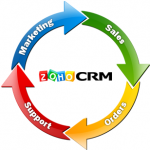 Regardless of the technology that people invent to improve lives, make it easier to communicate & share or simply make a buck, the old tips from Dale Carnegie still ring true. Maybe even more so, now, because we have much more contact with exponentially more people via the social web. As a business owner and brand ambassador, this is especially true. How often do you actively implement these strategies? More important, if they were so important to implement with a limited sphere of influence, then why not utilize them in a social media message to gain positive affect for yourself, your brand, and your business?
Regardless of the technology that people invent to improve lives, make it easier to communicate & share or simply make a buck, the old tips from Dale Carnegie still ring true. Maybe even more so, now, because we have much more contact with exponentially more people via the social web. As a business owner and brand ambassador, this is especially true. How often do you actively implement these strategies? More important, if they were so important to implement with a limited sphere of influence, then why not utilize them in a social media message to gain positive affect for yourself, your brand, and your business?
There were four main points to Carnegie’s book, and they can be used, today, with technology. It may be just the thing you need to encourage dialog and enhance your brand image. [Read more…]












Follow Us!